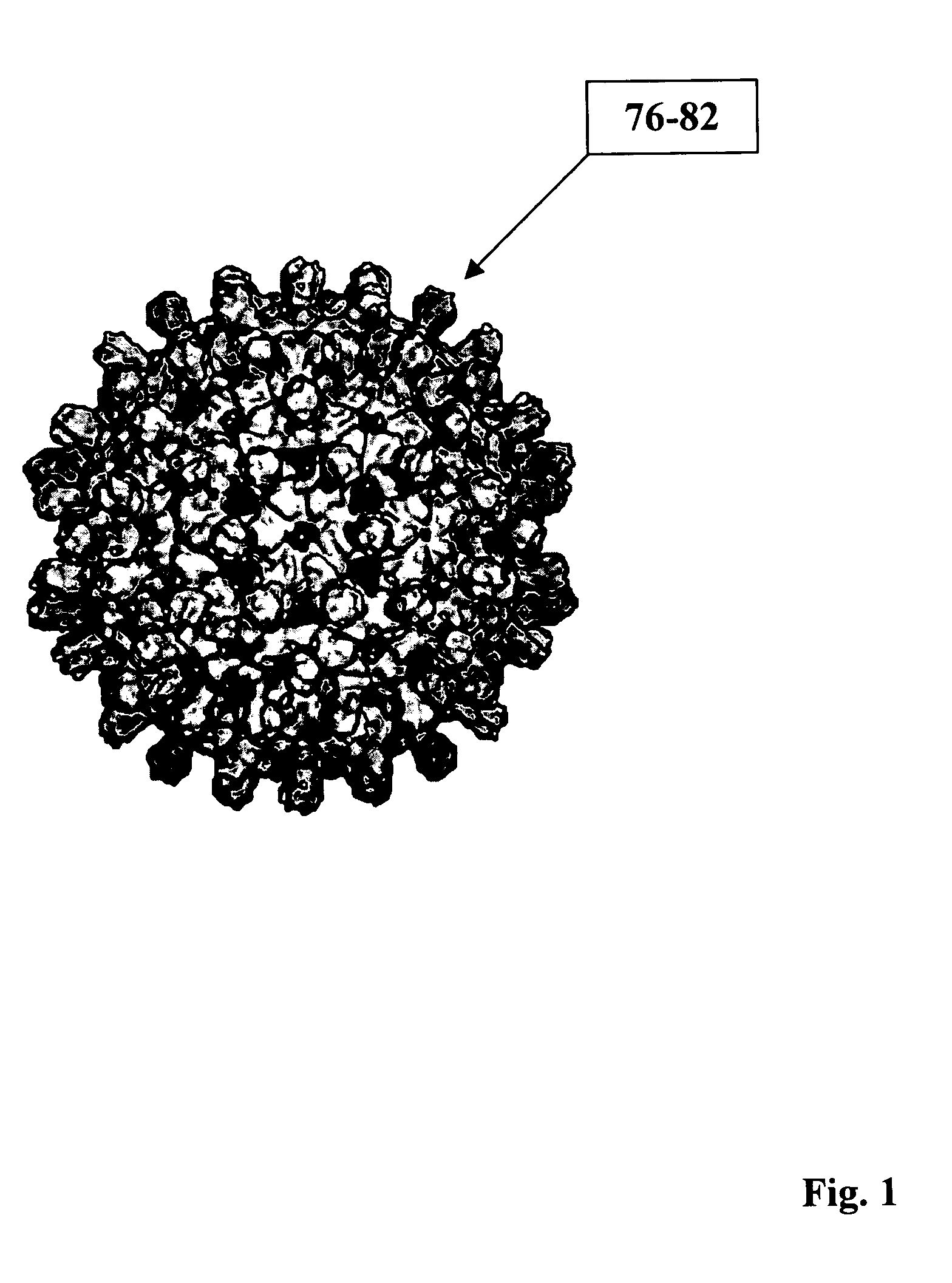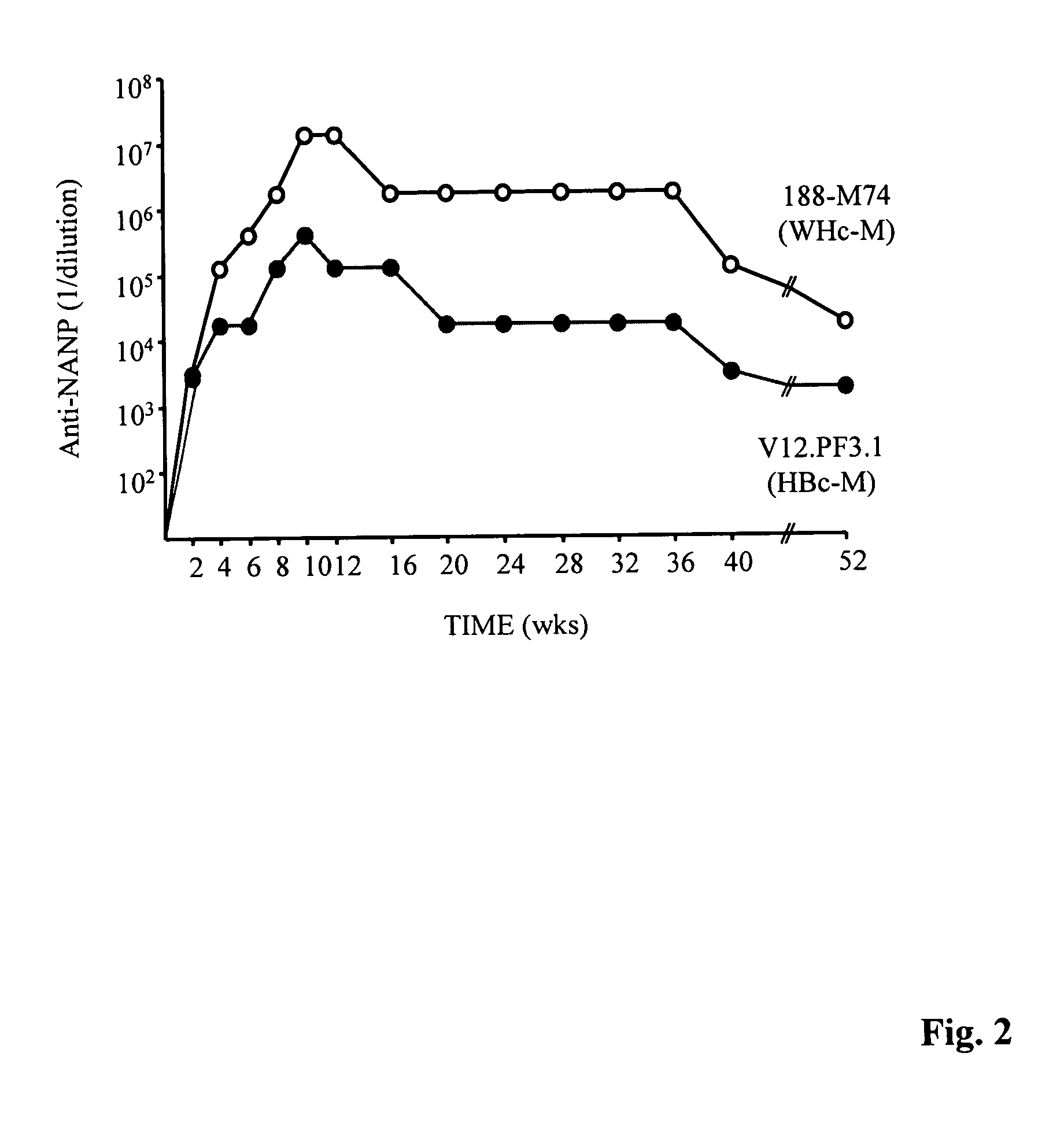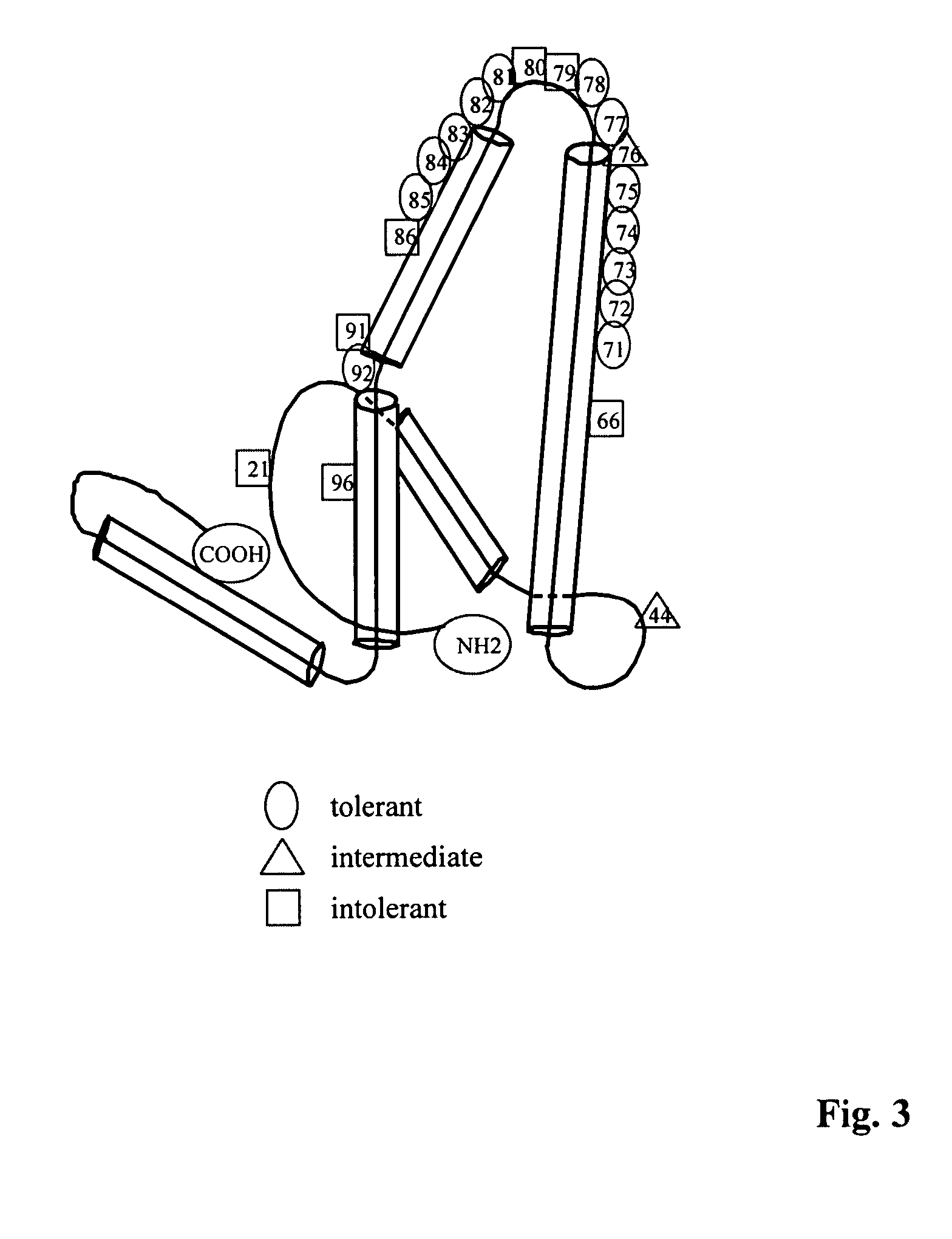Rodent hepatitis B virus core proteins as vaccine platforms and methods of use thereof
a core protein and hepatitis b virus technology, applied in the field of hepatitis b virus core proteins and nucleic acids, can solve the problems of unfulfilled promise of hapten-like technology, unable inability to meet the requirements of vaccine production,
- Summary
- Abstract
- Description
- Claims
- Application Information
AI Technical Summary
Benefits of technology
Problems solved by technology
Method used
Image
Examples
example 1
Immunization of Mice
[0292]Groups of 3-5 female mice, approximately 6-8 weeks old of various strains (either bred at the Vaccine Research Institute of San Diego, San Diego, Calif. or obtained from Jackson Laboratories, Bar Harbor, Me.) were immunized intraperitoneally for antibody assays and subcutaneously for T cell assays. Antigens were injected in saline, or absorbed in 0.1% (w / v) AIPO4 suspension, or emulsified in IFA or the squalene water-in-oil adjuvant Montanide ISA 720 (Seppic, Paris) depending on the experiment. Mice were bled pre-immunization and at various times after primary and booster immunizations for anti-insert / PS and anti-WHcAg antibody determinations. A larger number of mice / group (at least 10) were used to perform mouse potency (dose) studies because at limiting antigen doses, less than 100% of mice produce antibody, and the limiting dose was typically defined as the dose at which 50% of the mice produce antibody.
example 2
Antibody Assays
[0293]Anti-WHcAg or peptide antibodies were measured in pooled or individual, murine sera by indirect solid phase ELISA using solid phase WT WHcAg (50 ng / well) or insert peptide (0.5 μg / well) and goat anti-mouse Ig (or IgG isotype-specific) antibodies were used as the secondary antibody. The ELISA was developed with a peroxidase-labelled, affinity-purified swine anti-goat Ig. The data were expressed as antibody titer representing the highest dilution yielding three times (3×) the optical density of the pre-immunization sera. Anti-PS antibodies were measured in an identical manner on solid phase purified PSs (10 μg / ml), except that PolySorp plates (Nunc, Rosklide, Denmark) were used to coat PS antigens. Fifty micrograms of pneumococcal cell wall polysaccharide (C-PS) per ml of sera were added to absorb any anti-C-PS antibodies.
example 3
T Cell Assays
[0294]To measure T cell proliferation, groups of 3-5 mice were primed with either 10 μg of WT core, hybrid core or PS-core conjugates by hind footpad injection. Approximately, 7-10 days after immunization, draining popliteal lymph node (LN) cells were harvested, and 5×105 cells in 0.1 ml of Click's medium were cultured with 0.1 ml of medium containing WT core, hybrid core or PS-core conjugates, various synthetic peptides, or medium alone. Cells were cultured for 96 hr at 37° C. in a humidified 5% CO2 atmosphere, and during the final 16 hr, 1 μCi of 3H-thymidine (3H-TdR; at 6.7 Ci / mmol, New England Nuclear, Boston, Mass.) was added to each well. The cells were then harvested onto filter strips for determination of 3H-TdR incorporation. The data were expressed as counts per minute corrected for background proliferation in the absence of antigen (Δcpm). The T cell nature of the proliferation was confirmed by analyzing nylon-wool column-enriched T cells in selected experime...
PUM
| Property | Measurement | Unit |
|---|---|---|
| diameter | aaaaa | aaaaa |
| molecular weights | aaaaa | aaaaa |
| molecular weights | aaaaa | aaaaa |
Abstract
Description
Claims
Application Information
 Login to View More
Login to View More - R&D
- Intellectual Property
- Life Sciences
- Materials
- Tech Scout
- Unparalleled Data Quality
- Higher Quality Content
- 60% Fewer Hallucinations
Browse by: Latest US Patents, China's latest patents, Technical Efficacy Thesaurus, Application Domain, Technology Topic, Popular Technical Reports.
© 2025 PatSnap. All rights reserved.Legal|Privacy policy|Modern Slavery Act Transparency Statement|Sitemap|About US| Contact US: help@patsnap.com



